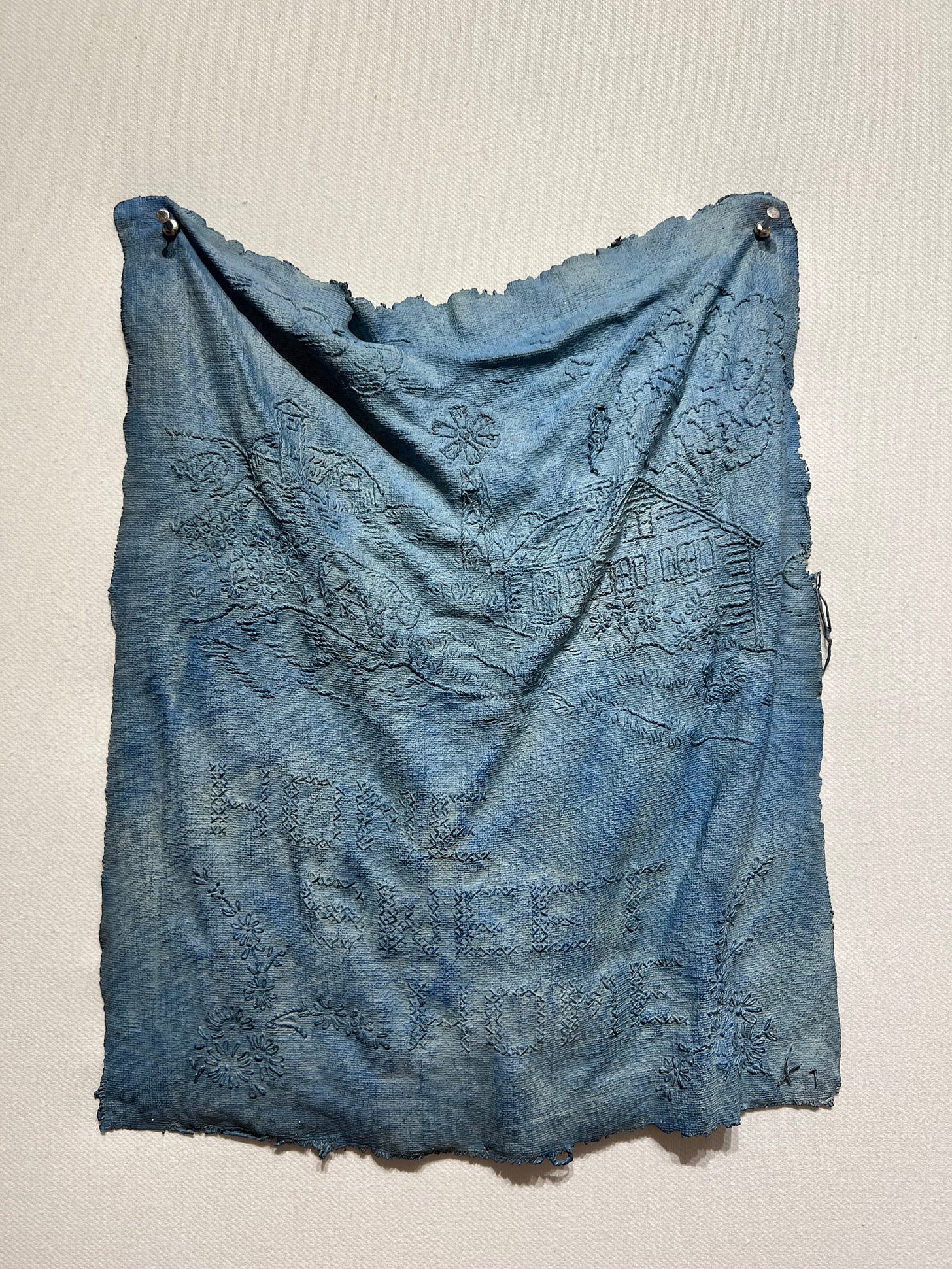As a mother of two kids in my forties, the process of finding jeans that fit is about as fun as having a root canal on my birthday (which actually happened one year). The only time I don’t seem to have a full blown panic attack is when I’m in a vintage store. Something about shopping for clothes strangers don’t want, or can no longer fit into themselves is weirdly freeing.
In the musty air of a secondhand store, I’m less judgmental of both myself and the clothes. The stretched out waistbands and frayed hems are a reminder that bodies and styles change, that nothing stays perfect forever. All the denim occupies one rack, dissolving the hierarchy of brands into a spectrum of blue. In that safe space, I worry less about age-appropriate trends or the numbers on the faded tags.
Before jeans were an article of clothing that could bring a grown woman to tears, they were workwear worn by every kind of laborer in America, from farmers to coal miners to railway builders. The fabric, a twill weave with a distinct diagonal pattern, was well known for its durability. The origin of the material is debated, but understood to have global roots, from Dungari, India, to Genoa, Italy, to Nimes, France.
The only problem with jeans, which were originally called “waist overalls,” was that they were prone to ripping with exertion. A tailor from Reno, Nevada named Jacob W. Davis solved this problem by adding metal rivets, a design element still used today. The demand for reinforced denim was so high that Davis approached Levi Strauss, a Bavarian-born immigrant and dry goods merchant based in San Francisco, to partner with him to scale the business. The “birth” of the blue jean is considered May 20, 1873, when the men received a U.S. patent. But as I learned from the PBS documentary, “Riveted: The History of Jeans,” (which I highly recommend), the story of denim is more deeply intertwined in American history.
Denim’s distinctive blue color, ideal for hiding dirt and stains, was created by the labor intensive process of indigo dyeing. The cultivation of this plant is often credited to Eliza Lucas Pickney, an 18th century slaveholder’s daughter and botanist from South Carolina. But as historians are now acknowledging, indigo cultivation actually originated with enslaved people from Africa. Their knowledge and forced labor shaped, not only a profitable Low Country cash crop, but a quintessentially American garment that has defined eras in popular culture from westerns to rock and roll to the hippie movement.
Jeans entered designer fashion in the 1980s and 90s, the era of my childhood. The Calvin Klein ad campaign featuring teenage Kate Moss in all her pale, emaciated glory still haunts me in dressing rooms today. In a department store or boutique, a pair of jeans that don’t fit can feel like a personal failing. But in the land of discards, there’s no sizing up or down. The article of clothing either works or it doesn’t. A vintage purchase is both better for the environment and, in my experience, the psyche.
Every rack is full of characters I’ll never meet. Who was the person who once owned the mid blue, high waisted skinnies? A Montessori school teacher? A stand-up comic? A Park Slope mom who finally got rid of all her pre-baby clothes? The ghosts of these women follow me into the dressing room, a gentle and forgiving audience.
Growing up in the suburbs of New Jersey, my mother and I used to go to yard sales. We would look for ads in the local paper, then drive around following handmade signs through unfamiliar neighborhoods. On a bright Sunday morning, we pawed through the owner’s belongings on folding tables and racks on their front lawn, negotiating prices scrawled on pieces of masking tape. Often we would leave with a random assortment - a salad spinner, an Alice Munro paperback, and a pair of faded denim bell bottoms with hand sewn patches. Not only was everything loose-change cheap in those days, it was fun. More fun than shopping at the mall, and certainly more fun than shopping online, as I do for most everything now.
This sense of discovery is what brings me back to a secondhand store, where a quest for jeans is almost spiritual in nature. It requires patience, time and imagination. Most items won’t fit, but this is part of the journey. Because when a pair does fit, it feels like a stroke of cosmic good fortune. It feels like some woman you’ll never meet has your back. It feels like those jeans were waiting there, just for you.
Thank you for reading!






